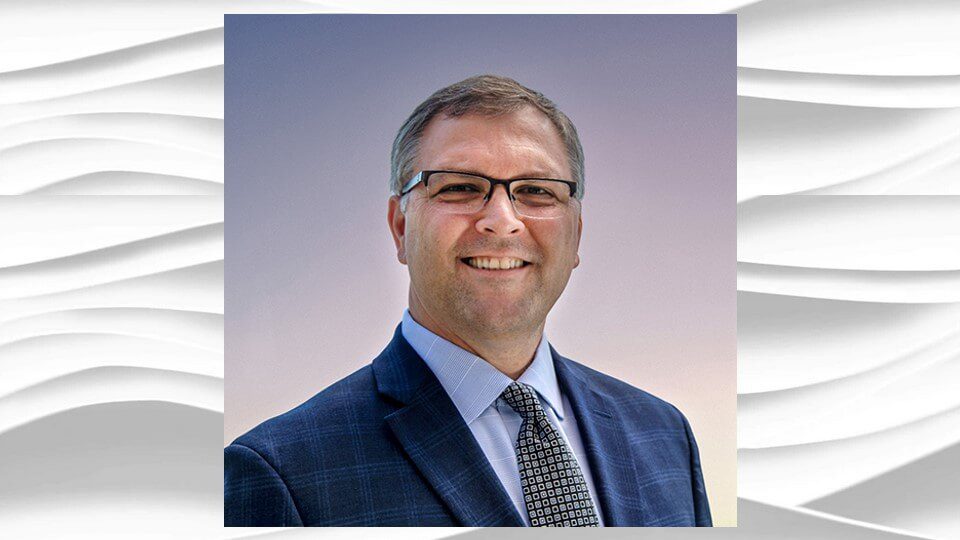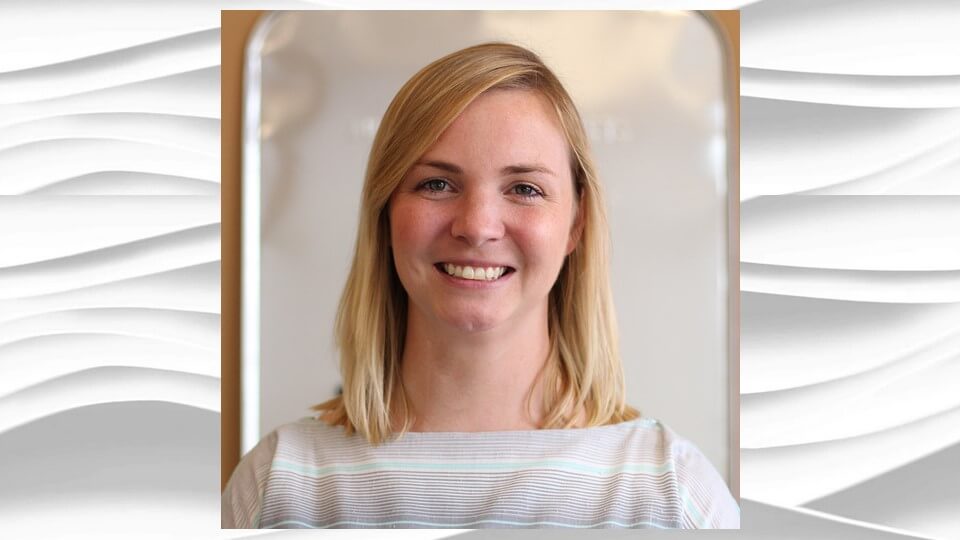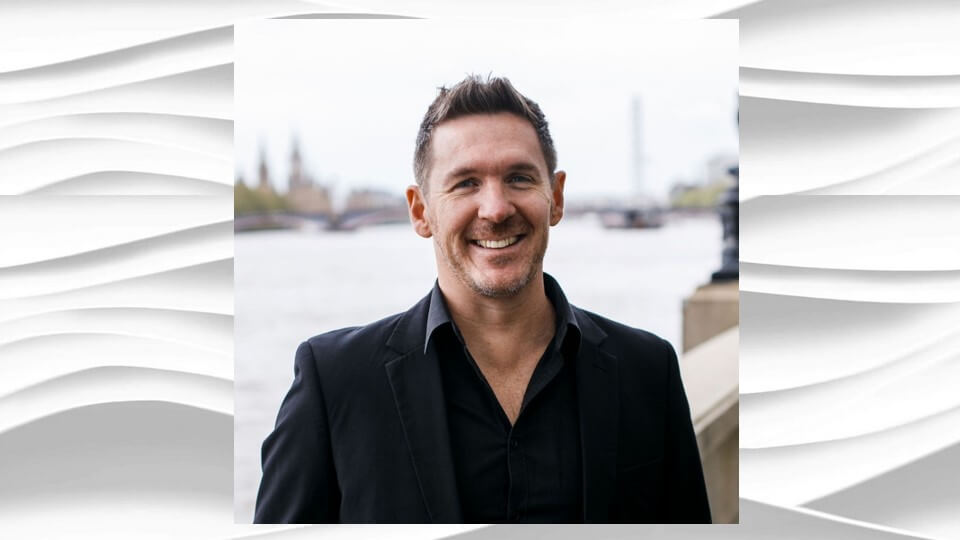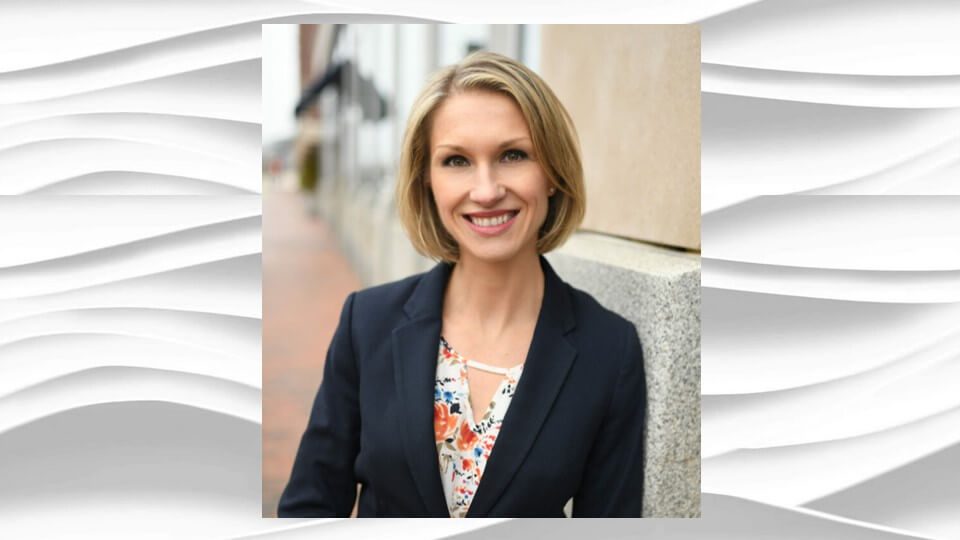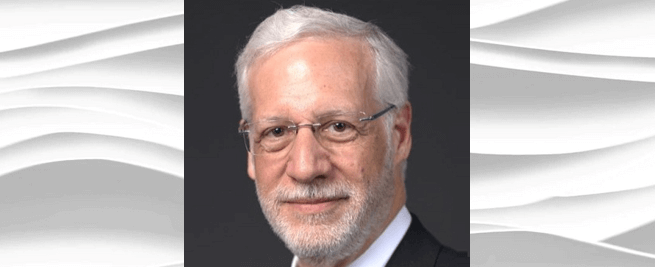The ability to sell your firm will be impacted by the environment. There is a good time to sell and a not so good time to sell. On this episode, Craig Dickens, CEO at JD Merit & Co., will shed light on the financial market trends and how it influences your exit strategy.
TRANSCRIPT
Greg Alexander [00:00:15] Welcome to the boutique with Collective 54, a podcast for founders and leaders of boutique professional services firms. For those that aren’t familiar with us, Collective 54 is the first mastermind community to help you grow, scale and exit your firm bigger and faster. My name’s Greg Alexander. I’m the founder, and I’ll be your host today. And today we’re going to have a conversation around some financial market trends. And the reason why we’re talking about this is because there’s a good time to sell your firm and there’s a bad time to sell your firm. Sometimes the sun is shining and sometimes it’s a little cloudy. It’s always good to know kind of what the trends are. And the best way to do that is to speak to people that are actively in the market managing these types of things. And we’ve got a great role model example today. His name is Craig Dickens. Craig is with JD American Company, which is a boutique investment bank. And he probably has his pulse or have the pulse of the market and his finger on the market better than most. So we’ve invited Craig to come speak to us today and share with us kind of what’s going on. So with that, Craig, if you wouldn’t mind, please introduce yourself to the group.
Craig Dickens [00:01:35] Yeah, terrific. Craig Dickens, I’m the CEO of JD Merritt. We’re a middle market investment bank. We focus on four areas, predominantly technology, consumer products as well as infrastructure and the built environment, as we call it. And obviously, pro serve is a market that we’re involved in as well.
Greg Alexander [00:01:57] Okay, great. So we’re talking in May of 2022 and let’s start at 30,000 feet. So it seems like if you pay attention to the public markets anyways, it’s a different world we’re in right now. So what’s your perspective on things?
Craig Dickens [00:02:15] Yeah, I guess I got to put a little bit of a backdrop on that because we came off of a record 2021, a lot of transact transactions. M&A activity was unprecedented, capital gains taxes were looming. So I’m still reflecting back to that wonderful time. And then we have, you know, a Ukraine war situation, inflation that’s somewhat out of control and stock market getting pummeled pretty hard. So I guess the keyword here right now is uncertainty. Yeah. And, you know, markets never react favorably to uncertainty. And I think we around here called quarter one the big horns. Yeah. Everybody was waiting to see how the dust settled a little bit. So really an interesting time in the market. Yeah.
Greg Alexander [00:03:04] You know, for whatever reason, I don’t know how this happened to me, but the times of the greatest prosperity for me were times like this. So I’m old enough to remember the meltdown of the dot com. And I was in the tech industry at the time that I started my boutique just before the financial crisis of 0809, and then I launched Collective 54 and three months later covered it. So my timing hasn’t always been great, but what I found during those time periods is it’s a great shakeout, if you will. Firms that maybe aren’t for real kind of go away. So if you can build a great firm in those conditions, supply and demand actually goes to your favor because there’s far fewer firms, quality firms anyways available for purchase and you can really stand out. And Craig, one thing that I like about you is that you advise your clients to focus on what you can control and to prepare for this. And you talk about reverse engineering your exit, which is just such a catchy way of describing this. So could you expand upon that a little bit?
Craig Dickens [00:04:14] Yeah, I think, you know, each one of us that’s running a business in these times, right. You know, we need to focus on the things we can control because we can get overwhelmed by what’s going on around us in the process. So again, just to maybe bucket the good news, right, especially thinking about boutique owners, we’ve got rapid rise in digitization. We’ve got a distributed workforce that needs training, I.T. consulting, etc.. And then ultimately the consumer or the customer has been trained to engage our services without us necessarily being in the room. Yeah. And then you have the great resignation, right? So in many ways it’s so hard to hire talent that you have to rent it so pro serve. You know, there’s to your point among the disruption, among the uncertainty, there’s plenty of opportunities and plenty of good news, if you will. But then we’re hit with some of the bad news that we tend to. Right. Interest rates, inflation, I mentioned a few of them. And the inverse of of the great resignation is that many of us are having trouble scaling because we can’t hire the execution and delivery teams that we need to. So, you know, I can only focus on those things that that I can control. And in this case and in this environment, we really have to go back to the best offense is a good defense. We need to prepare ourselves for good times or bad times. And to your point earlier, Gregg, be that standout, right? Be that leader or not that neutral or that laggard to whatever industry or vertical we’re serving so that they see us as head and shoulders above. And again, not to overused the sports analogies, but, you know, we’ve got to be prepared. Those folks that prepare are going to win and those folks that prepare are actually going to get a deal done. Those accidental tourists that have an ally show up on their desk and say, you know, you know, fortune, whatever is going to buy me, you know, that is the rare the rare situation. It’s truly that prepared that that get to a deal.
Greg Alexander [00:06:27] You know I’ve heard you say on our member calls this term post-transaction economics and for those that might be hearing that term for the first time to find that term force or terms, I should say yes.
Craig Dickens [00:06:42] So most of us have spent a career operating in our giftedness, in our in our in our specialty. Then we learn as we go how to grow companies. And, you know, exiting a company is a very different exercise and requires some different skills. And we always think about us, right? The marketplace is going to want us. Microsoft is going to buy us. Right. It’s it’s very me centric. But really, I think the most effective and the highest priced deals are where the team gets together and says, okay, what is different about our company? What is the leverage of Bill about our company? And most importantly, who will buy us? And that’s a deep exercise. Right. And you almost want to really strategically analyze those people in what we call the buyer universe, because, of course, everyone wants to sell to Microsoft or Accenture or whomever is their, you know, their ideal, but reverse engineering that and really analyzing the value and showing your buyer the inherent value of when they buy you and they pour water on you, how you will grow in their ecosystem, then you become much more valuable in their eyes. And if we can do that with ten or 12 different acquirers, now we have a rodeo, and that’s where the true outlier multiples come from.
Greg Alexander [00:08:04] Yeah, it’s a great example. It’s it’s value based selling in many ways. I mean, when you own me, Mr. Acquirer, you know, you can triple me or quadruple me, whatever. And then what’s that worth today? That’s an interesting thing to think about.
Craig Dickens [00:08:18] What I would add to that Greg, just real quick, I would almost on that omni account based selling side of it, almost treat your acquirer as if you’re analyzing like you’re going to sell them something and then plug you in as the product. Right. And so then you’re highly focused on what you can do under their umbrella with their sales team, with their capital resources, with their technology. And even though you might be a puzzle piece, you know, I’ll give you an example. We we sold a company. It was a small $8 million company, but they had a puzzle piece to an email distribution issue that a big player needed to compete with Brand X. And that puzzle piece became so valuable that, you know, they went up into the double digit multiples to buy that company. So that’s the kind of reverse engineering, if you can get into their kitchen, so to speak, and find out their pain points or the aspirin that they need, that’s that’s huge to value.
Greg Alexander [00:09:13] So when I speak to members during office hours, which is an opportunity for members to speak to me, those that want to anyways on a 1 to 1 basis. And we’re having the conversation regarding exit. There’s three questions that come up every time. So first is what’s my firm worth? Second is who’s going to buy it? And the third one is, when should I sell it? And I want to spend a moment on that because there’s usually some type of life event that get somebody to think about selling their firm. The most common one is age. They get up, you know, in the 50, 6070s, they want to retire. Most of their net worth is wrapped up in their firm and they need to sell that, generate the capital to retire. And unfortunately, sometimes they don’t think about it until it’s too late and they say, okay, I want to sell my firm in a year. Meanwhile, it’s a non sellable asset because there really isn’t a firm. There’s a brilliant founder with a bunch of helpers and there’s nothing there for. Somebody to buy. So you mentioned that sometimes our timing can be off. So there’s this issue about trying to time a sell around. Retirement is a is a puzzle to me. What advice would you give our listeners around retirement and exiting and and trying to thread that very difficult needle?
Craig Dickens [00:10:38] Yeah, I think, you know, there’s some fundamental ideas and concepts that people should, should think about as they look at the age question. You know, the facts would tell you and I’ll give credit where credit is due. John Warrillow, who wrote the book Built to Sell, did a survey, and 75% of entrepreneurs equate the sale of their business with retirement. Hmm. So and then they have a number, right? 65 or whatever their retirement number. But what if the market’s not going to favor you at that point? You know, the advice we give entrepreneurs and entrepreneurs by nature, you know, we wouldn’t be doing the things we do and running process of companies and building and growing and scaling companies if we weren’t optimists. But I think many times entrepreneurs wait too long, wait too long to sell and wait too long to adjust their business in a downturn or a slowing growth environment. And that’s really while it’s it’s pretty boring, right. But, you know, 3 to 5 years out from your desired event, you should be getting some advice, some counseling to say, okay, you know, when’s the right time? And just like, you know, I’ve got some friends who bought Apple stock and sold it at at a decent number and then it went up another $100 and they were all upset. You kind of need to leave a little juice in the orange, so to speak, when you’re selling your company. So waiting too long really spells a discounted value. But selling early, as long as you know your number, for what it’s worth, and who the buyers might be. And you run a good process, you know, ultimately, I think you’ll be happy with that outcome even if you have to retire a couple of years early.
Greg Alexander [00:12:16] Yeah. You know, I was on John Morello’s show and I’ve read his books and I think he’s great and he contributes so much to all of us. One thing that he says often is what what the business is worth to you and what the business is worth are two different things. And if you know what the business is worth to you, you have a number, as you just mentioned, and somebody comes along and they’re willing to offer you more than that. Then you sell it. If the business if you know what the business is worth to you and the offers are below that, then you don’t sell it or you adjust your expectations. So this idea of knowing what your number is, it’s a hard thing there to really calculate. And at least and I think I’m similar to many of our members and that I’m an eternal optimist and an entrepreneur in my blood as well. My number keeps moving all the time. So how do you how do you get a first time founder going through an exit for the first time to get to a number that they’d be willing to accept?
Craig Dickens [00:13:23] Yeah, that’s the great you know, the number one deal killer is seller expectations. Right. And we see it all the time. You know, we have people put it on a piece of paper, the old envelope test write, you know, my number is 30 million. And when we’re haggling, when we’re up around 60 million, and it’s still tough to make that decision. Right? Well, wait a minute. You said 30. Yeah. You know, so it’s tough and it’s an emotional decision. And I would say that I guess if I go back to the fundamental playbook, right. You got to get a valuation. If you’re serious about knowing what you’re worth, you have to get a valuation and bake that into your budget. And really, that will also give you not only the fundamental value, but it’ll give you those market indices. And if you do it for three or four years, right, you can you can begin to see how the market is is valuing your type of company or your sector or, you know, the various anomalies in the market over time. So that’s that’s number one. Got to do it. Number two, having a conversation with your investment banker and then in particular your CPA and saying, okay, I’ve got the tax man, right. He’s always in every transaction. So knowing your net after tax proceeds is huge. Everybody says, oh, the top line number is 60 million. We’ll have half that as an earn out and all sorts of structure. Right. It’s a very different equation. And if Uncle Sam is going to take, you know, up to half of it, you need to know the net number. And then really the third piece that we have, everybody go through is you have to sit down with your wealth manager. They’re going to run something called a monte Carlo, which is going to tell you under certain conditions in the market, if we plan on taking that wealth and you plan on living to 87.3 years old. Right. Here’s what you’ll have to live on. Yeah. Those fundamental decisions and those kind of things that owners need to do. You’d be surprised how many? Don’t really do that. Yeah. They get into a transaction and then they become confused as to what to do when really these are things that you don’t even need an ally. You don’t even need to be in process. You just need to go out and know your worth, know how much you’ll need, and then how much on an after tax basis you’ll need. Then you can start to deal with the emotional issues of, you know, yeah, I might be a little married to my team, I might be doing too much. I don’t have a strong management team, right, to really start to engineer your exit and think like an investor. Yeah. Versus just a lifestyle. Yeah.
Greg Alexander [00:15:55] Well, listen, I could talk to you about this forever, but and I look forward to our member Q&A coming up. But we’re out of time. So, listen, your commentary on market trends. You know, I think you said the key word here is uncertainty. And that’s the market that we’re in. However, you know, if you adhere to Craig’s advice and I’d advise all of you to do that, it’s a 3 to 5 year look. And in three or five years, things will be very, very different. So taking some of these best practices and implementing some of them now makes a lot of sense. So so Craig, on behalf of the membership, appreciate you contributing today.
Craig Dickens [00:16:31] Thanks so much, Greg. Enjoyed it.
Greg Alexander [00:16:33] Okay. All right. And for those that are interested in this topic and others like it, pick up a copy of the book, The Boutique, How to Start Scaling, sell a professional services firm and for those that might see value and meeting people like Craig and being part of a community of preserve, boutique founders and leaders consider joining our mastermind community and you can find it at collective54.com. Thanks again. Take care.
